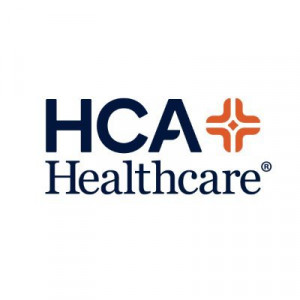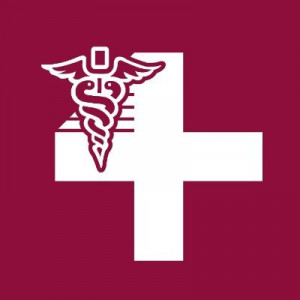





























Kansas City is the largest city in Missouri by population and land area. Its metropolitan district spills into its next-door neighbor, Kansas City, Kansas. Most of the city belongs to Jackson County. It also creeps into Clay, Cass, and Platte counties. You’ll see healthcare bridging the border as well. Children’s Mercy covers both Kansas City, Mo., and Kans. and is ranked the top children’s hospital in the area.
Healthcare is the largest industry in Kansas City, Mo., with 26% of all permanent full-time job openings in healthcare and social assistance. In a list of the 10 largest employers in the area, hospitals took the first three spots. They are Saint Luke’s Health System, Hospital Corporation of America, and Truman Medical Centers.
If you have your eyes on nursing jobs in Kansas City, read on to see what else you can find here.
Quick Facts About Nursing Jobs in Kansas City
- Is Missouri a compact state? Yes
- What do RNs earn in Kansas City? The average annual salary for RN jobs in the Kansas City metro area (Kansas City, Mo., and Kansas City, Kans.) is $76,580 compared to the national average RN salary of $77,600.
- Where can I find information about RN license requirements in Missouri? You can visit the Missouri Board of Nursing website for up-to-date information.
What to Know When Pursuing Nursing Jobs in Kansas City
The first thing you’ll need to be successful in Kansas City is to know the difference between KCMO (Missouri) and KCKS (Kansas). Beyond the initials, the Kansas side is more urban and business-centered. The Missouri side is known to be larger and more welcoming for tourists. Study up on two of Kansas City’s claims to fame — barbeque and jazz. Kansas City barbeque is seasoned with spicy dry rub and served with a thick sweet sauce. The jazz in KCMO is also spicy, with a treasure trove of jazz clubs, jazz brunches, and a jazz museum.
You have the opportunity to work full time, part time, on contract, temporarily, or even per diem nursing jobs in Kansas City. Hospitals, doctors’ offices, nursing homes, and other skilled nursing facilities are looking for qualified RNs, CNAs, and LPNs — just like you.
When you’re a nurse in Kansas City, Mo., you’ll be in a healthcare system that serves about 500,000 people with a median age of 35. Your patient base includes 13% over the age of 65. About 26% of the Kansas City population is Black, 3% Asian, and 10% Latino.
Working in Kansas City
Kansas City, Mo., has 114,210 residents in healthcare positions. The top five of the area’s 17 hospitals are ranked by U.S. News & World Report in this order:
- University of Kansas Hospital
- St Luke’s Hospital of Kansas City
- North Kansas City Hospital
- St. Luke’s East Hospital
- Advent Health Shawnee Mission
Along with these and the remaining 12 hospitals in the area, you might find nursing jobs in Kansas City in one of the Kansas City Health Department’s four health clinics:
- Childhood Vaccine Clinic
- Sexual Health Clinic
- Tuberculosis Clinic
- Adult & International Travel Immunizations Clinic
You’ll find several skilled nursing facilities, assisted living and memory care facilities, and nursing homes in Kansas City as well.
When you look at how you’ll get to work in Kansas City, you’ll find the average commute time is 21.8 minutes, a bit shorter than the average U.S. commute time of 26.4 minutes. Most people (80.4%) in Kansas City drive to work alone, 8.4% have found someone to carpool with, and 2.9% take mass transit. The remaining 4.8% work from home.
Do you need childcare while you work? Missouri’s Child Care Aware program helps parents find reliable, safe childcare through its online database of providers.
You have some choices for pet care, too, in Kansas City. Yelp has many businesses and individuals rated for their pet care service. You can also try Rover or Care.
Living in Kansas City
When it comes time to look for housing in Kansas City, you have many choices. In fact, you have 240 neighborhoods to choose from. If you’re a jazz fan, 18th & Vine is where the best jazz clubs are located. Brookside was built in the 1920s and is home to parades and festivals. Independence is perfect for history buffs.
If you’re a foodie, you might want to look at the Kansas City Power & Light District, where you’ll find restaurants serving Kansas City’s signature foods. We talked about ribs, but more specifically, the ultimate KCMO dish is “burnt ends,” the charred ends of barbeque slabs. You won’t find cheese slippers in any shoe stores but at local bakeries that stuff various kinds of cheese into organic wheat flour bread.
Walk some of those calories off with a visit to any of the city’s fascinating museums and exhibits. Beyond the jazz museum, you can stop by the big building with the giant shuttlecocks in the front yard. It’s the Nelson-Atkins Museum of Art with a wide variety of exhibits.
The most popular airport for the KCMO is Kansas City International Airport, located 20 miles northwest of downtown. A 27-minute drive or $50 taxi ride will get you to town or back. If you want to get out of town for a day or a weekend, some popular day trips from Kansas City include the Lake of the Ozarks. The Rolla and Mark Twain National Forest is a roughly three-hour drive, making it a nice weekend getaway.
Keep a little bit of everything in your closet to dress for the Kansas City weather. Summers are hot, muggy, and wet. Winters are very cold, snowy, and windy.
The cost of living in Kansas City, Kans., or Mo. is 5.5% lower than the average of other U.S. cities. The median home price is a little over $222,000. The average two-bedroom home or apartment rents for $1,210.
Find Top Nursing Jobs in Kansas City
Looking for a truly flexible career as an RN, LPN, CNA, or GNA in the Kansas City area? IntelyCare may be just what you’re looking for. Start your application with IntelyCare and build a satisfying career that allows for a more-balanced life.